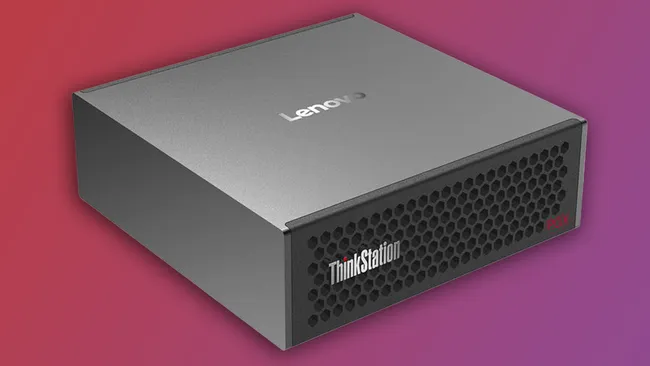
Lenovo has officially announced its latest AI mini supercomputer, the ThinkStation PGX, designed to provide developers with a powerful AI workstation right out of the box. Dubbed “a compact, personal AI developer workstation” by Lenovo, the PGX is powered by Nvidia’s GB10 Grace Blackwell Superchip, boasting 128 GB of coherent unified system memory.
Performance & Scalability
The ThinkStation PGX delivers up to 1 PetaFLOP (1000 TOPS) of performance, enabling developers to work on models with up to 200 billion parameters. For those needing additional computational power, Lenovo allows two PGXs to be connected, increasing the parameter count to 405 billion parameters.
Software & Functionality
Running on the Nvidia DGX operating system, the mini workstation comes equipped with Nvidia’s standard software stack for AI development. Lenovo has further enhanced its usability by integrating tools like PyTorch and Jupyter, enabling developers to work locally without depending on cloud computing or large-scale on-prem clusters.
Market Competition & Pricing Expectations
The ThinkStation PGX appears to be Lenovo’s response to Nvidia’s Project Digits, which introduced the first AI mini supercomputer at CES 2025 with a $3,000 price tag. Lenovo has yet to disclose PGX’s official pricing, but it is expected to fall within the same range when it launches in Q3 2025.
Competing AI Mini Supercomputers
Other companies have also entered the AI mini supercomputer space. Asus unveiled the Ascent GX10 at GTC 2025, while MSI has teased its own upcoming model, set to debut at Computex 2025. While these developments have excited AI enthusiasts, skepticism remains in some corners of the industry.
Tiny Corp’s Skepticism: Gaming PCs vs. AI Workstations
Tiny Corp, the startup behind the TinyBox AI accelerator, has expressed doubts about the value of dedicated AI mini PCs. The company argued that users should instead “just buy a gaming PC” rather than investing thousands in an AI-specific machine.
According to Tiny Corp, the PGX’s 1 PFLOP performance is pegged at FP4, which they claim is practically unusable. At FP8, the PGX (alongside other Project Digits machines) is expected to deliver 500 TFLOPS of performance.
By contrast, TinyBox Green, now powered by four RTX 5090 GPUs, offers 1,492 FP16 TFLOPS, translating to 2,992 FP8 TFLOPS—roughly six times more powerful than Nvidia’s Project Digits. However, TinyBox Green starts at a significantly higher price of $29,000, making it an entirely different category of investment.
As the AI hardware race intensifies, Lenovo’s ThinkStation PGX adds another compelling option for developers seeking an accessible AI mini supercomputer. However, with differing opinions on its real-world performance and cost-effectiveness, buyers will need to weigh their priorities carefully before investing.